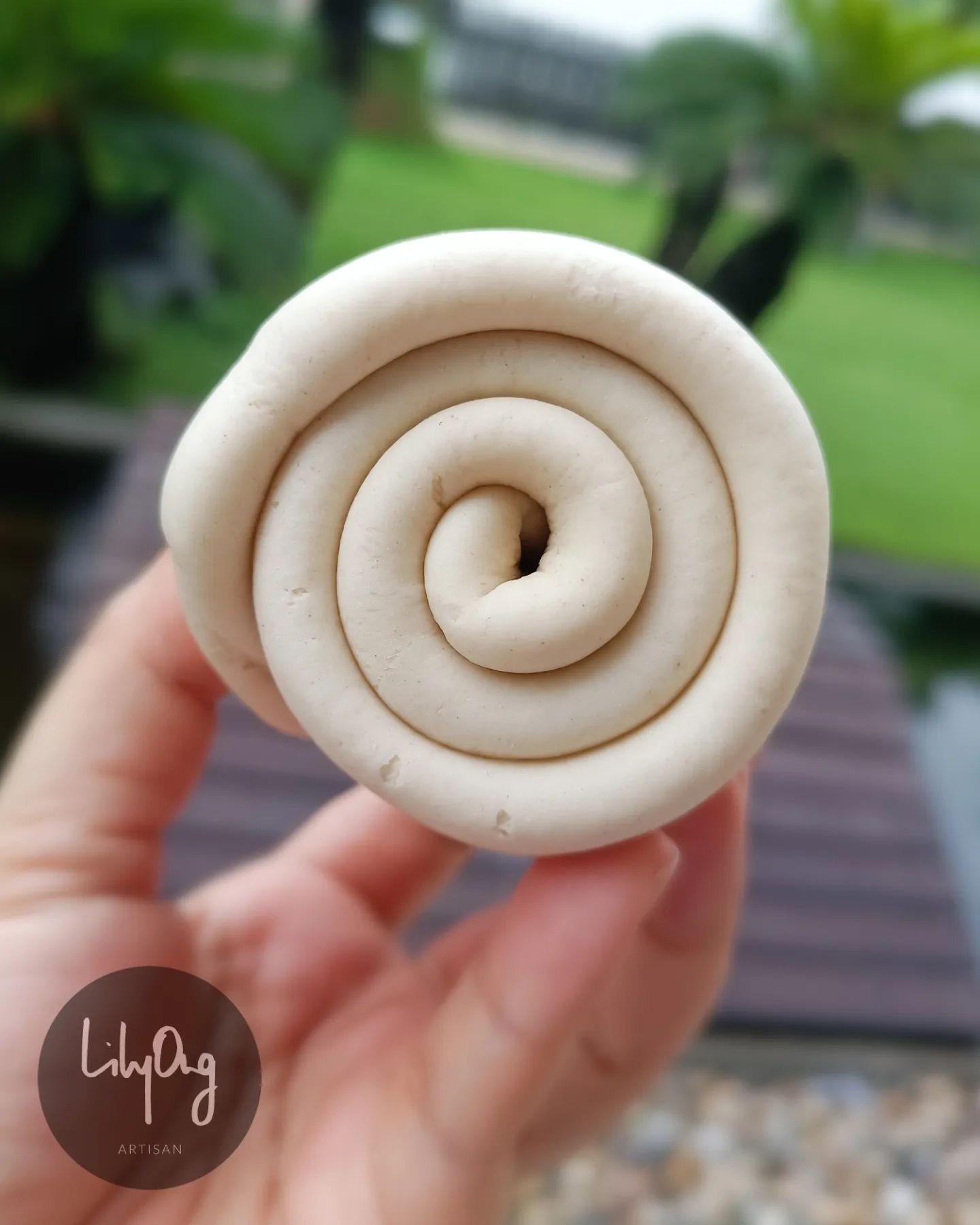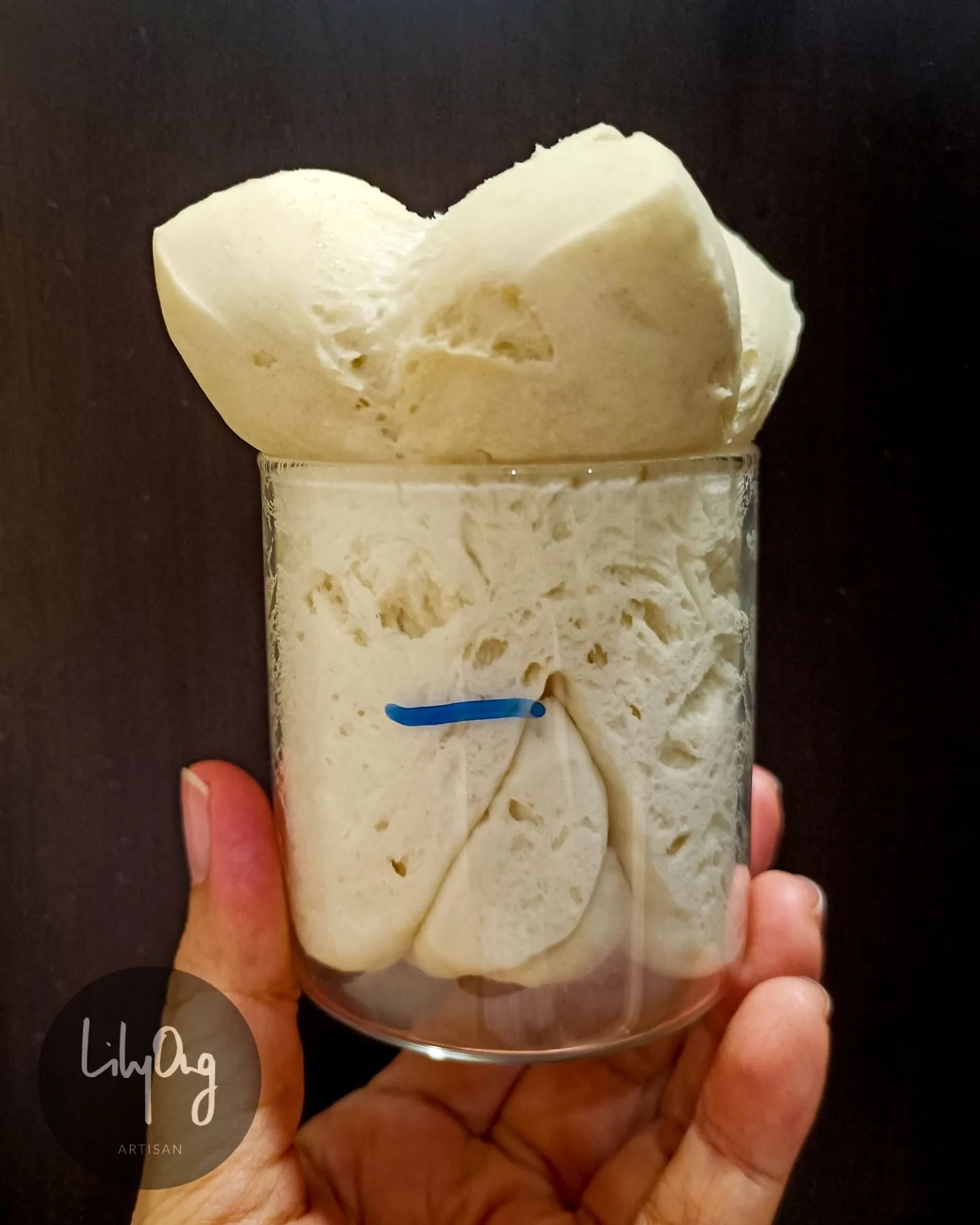Pasta madre Maintenance and a little troubleshooting
- Lily Ong
- Aug 2, 2023
- 4 min read
Updated: Oct 18, 2023
You have created your own pasta madre. You took so much time to make it. You might have given it a name (mine is Bobster, nice to meet you). Naturally, you want to take good care of it because it'll give you beautiful enriched bakes like panettone. What is the best way to take care of your PM? Isn't this the tricky question?
Honestly, I don't think anyone knows more than you yourself. You know its behaviour, you know how it smells, how it tastes, how it feels. You know it the most intimately. That said, do you taste it and smell it every time? If it smells or tastes different, then you'd know immediately something is off. I think it's really important. Ideally, you feed the PM twice a day. One short warm refreshment at 28-30C, and a long cold rest at 16-18C. Many publications will say to feed it at 1:1 PM:flour ratio, at about 40-50% water.

Your PM should smell fruity with a hint of acidity. It should taste slightly sour and slightly sweet. If your PM smells like flour, or if your PM does not smell like anything, then maybe it is weak, or it is lactic heavy (because it has no smell). Maybe the dough gets too soft during mixing, and you have problems incorporating butter. Those are signs of lactic acid heavy PM. You'll want to make it more acetic. How to do that? This I can tell you because my PM used to smell like nothing. It also tasted bland, like flour. That was when I followed the general feeding of 1:1:0.4, one warm and one cold.
To encourage acetic acid, temperature has to be lower. PM has to be drier. So I lowered the hydration of my PM to 38% and reduced the temperature of night rest to 14-15C. When I did that and still fed it 1:1 PM:flour, I noticed the PM didn't ferment properly. Fermentation slowed down due to both factors. Just like when you make sourdough bread. If you reduce the hydration, and ferment in a colder place, it'll take longer to proof. So I increased the ratio of PM to flour. I used 2:1 PM to flour. And Voila! After 3 days, my PM smelled so good! But it was sticky. I adjusted the ratio of PM to flour until I get the one that works best for me. It's 1.2:1:0.38 15-16C for 22hours. I would do this for a few days, then add a warm refreshment once or twice a week at 1:2:44%. This will increase the lactic acid and also fix the gluten of the PM.
There isn't a right or wrong way to feed the PM. Each PM is unique. I have fed my PM 1:2:43% for night rest before. I kept it at 18C and it would grow and acidify very quickly, but at the same time, I smelled nothing. Maybe it was just weak, I don't know. For a long time, more than a year, I worked with a PM that didn't smell much. My panettone was still fine. I did not encounter problems with the process. My PM did not triple either and yet, it was still OK. So what gives?
I am still learning and figuring out my own PM. Since I like to experiment, just doing it and observing, I think I'm learning a lot. I can ask others for their advice, and I might get different answers. Or, I'd get a nonchalant answer that is very vague. I think it's realistic of me to think that not everyone will tell me everything for free. Many people share for a bombastic fee. There are some who have been asking me many questions, but when I ask them my questions, they don't give me a direct answer. That's why it's quite frustrating when there are so many selfish people around. I understand information is $$ but in this case, it should be a fair trade of info. My friends call me Silly Lily for sharing no holes barred. And I digress....
So in the end, I need to try everything on my own, and find the right answer for my unique PM. If you have a habit of asking but maybe afraid of doing it, then you'll just be stuck in a loop. Always wondering in your head, with no actual answers for your precious PM. That's what I observed. The same people will ask the same questions to different bakers, and the answers are all similar. But why do they ask the same question even half a year later? An important note, before trying something drastically new on your PM, make a backup and put in the fridge. In case something really goes wrong, you still have Plan B.
That said, flour plays an important role too. Using the right strength of flour, not too strong, not too weak, will encourage the PM to grow. One that is too strong will inhibit growth. One that is not strong enough will break down. These are all things that I've learned from making sourdough. When I use flour that's too strong, dough is not extensible. It will even inhibit oven spring and open crumb. So playing around with that, is important. When everything is done right, PM is mixed until smooth and slightly extensible before laminating, it should at least grow 2.5X and triple during warm refresh (about 43-45% water), a sign of good health. There are many different types of flour in this world, and I don't know your flour. So please play with it and observe.
I hope this is helpful even though I am no expert. Disclaimer though, what works for me might not work for you. Our PMs are unique after all.
Happy baking!
Lily




Hi Lily,
I’ve been following your article on pasta madre maintenance (https://lilyartisan.wixsite.com/bakes/post/pasta-madre-maintenance) and I’m a bit confused about the ratio you wrote as 1:2:43%. Did you mean 1 flour : 2 PM : 38% water?
Also, for the past two weeks my pasta madre hasn’t been rising much. The maximum rise I’ve seen is only 2x, never more. Do you know what could be happening?
Thank you so much for your help!
Hi Lily. I have 12.8-13.5% protein in my flour and 0.55 ash content. I have used this flour when training my pasta madre and since t45 flour is like 00 flour. Since then feeding with t45 flour slowed down my refreshments and causing it to not grow 2x. When using my 12.8-13.5% flour back then it only doubles at 4hr, but acidify quickly. T45 flour has a 14%max protein. Also, it smells slightly sour and taste little tang at 4hour mark. I don't have ph meter so whatever I do I can't make it to triple size.
Hi Lily. What is the protein content of your flour? I’ve been using molino pasini panettone flour with 16% protein and 44% hydration is so difficult to knead. I’ve been shooting for 45 but just can’t get it to smooth and silky. I also can’t get it to more than double. Do you think I should try a lower protein flour? At the least what I’ve been reading seems to suggest high protein flour. Or maybe increase hydration closer to 50? Mine smells fruity and tastes nice w a tang at the end but can’t get the open honeycomb and can’t get volume. Thanks for sharing!
Susan
Hi Lily! Thank you for sharing! I was wondering if you keep your pasta madre feeding cycles between the chiller and "room temperature" on regular days (not using it). I've found that in order to reduce waist (because LM can be wasteful unfortunately) I use my PM at least three times a week and rarely put it in the fridge, but the days I'm not using it I alternate long chilled cycles 18-24h and then warm cycles (with the oven light on) can reach to 28º C for max 12h, some people recommend higher temperatures like 35º C, have you ever tried such high temperature? Great content Lily as a home baker with other things to juggle is definitely challenging…
Hello Lily !
First I would like to thank you for all the work you do and your selfless way of sharing it! It means a lot to me and I found some answers to questions I had from the beginning.
One thing worries me. It is easy enough to have a warm spot (light on in my oven) but I do not have a chiller and my fridge is 4-10Celsius. Do I need a chiller ? and what do people do, that don't have one?